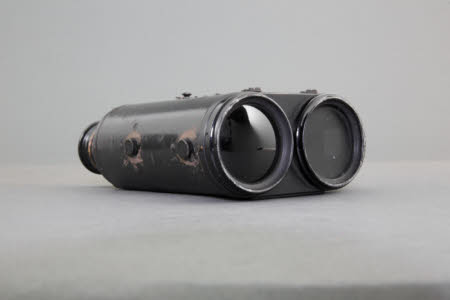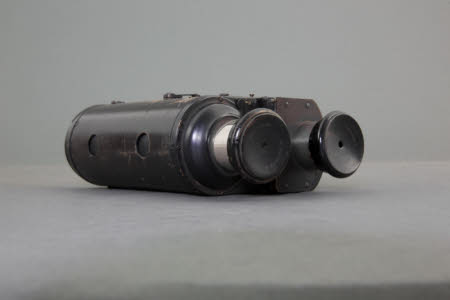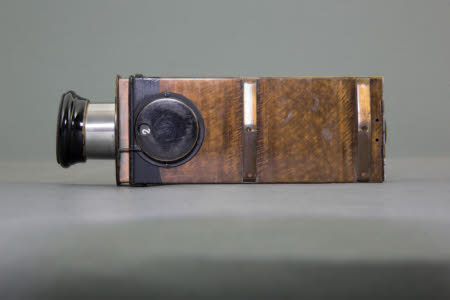A Watson Stereoscopic Binocular camera.
W. Watson and Sons
Category
Photographic technology
Date
1896 - 1920
Materials
Metal, Glass, Leather
Measurements
195 x 125 x 65 mm
Order this imageCollection
Fox Talbot Museum, Wiltshire
NT 1524903.1
Summary
A Watson Stereoscopic Binocular camera. The camera body is made of metal covered in black leather, and is shaped to resemble a pair of binoculars. The binocular 'lenses' are however dummies and the camera takes stereo photographs at right angles through the lens holes in one side of the body - this was marketed as being good for taking candid photographs, particulary in foreign countries. One of the two eyepieces incorporates a viewfinder with a right angle prism. The camera lenses are fixed focus, fixed aperture, and there is a spring powered shutter with variable speeds. The camera takes 45 x 107mm plates, stored in a plate magazine which can be slid out when the knurled retaining screws on the side of the body opposite the lens apertures are loosened. Although sold in England by Watsons, the camera was manufactured in France by Edmund and Leon Bloch, where it was sold as the "Physiographe Stereo Model 3". Markings; on the eyepiece covers "W Watson & Sons, Opticians, 33 High Holborn London". On the base of the viewfinder eyepiece "Patented in England and abroad". Shutter speeds 1/25, 1/50, 1/80th marked on the shutter mechanism.
Provenance
Part of the Fenton Collection. A gift from British Film Institute in 2017. From 1986-1999, part of BFI collection for the Museum of the Moving Image. BFI purchased collection in 1986 from James Fenton's Museum of Photography, Port Erin, Isle of Man 1976-1986
Makers and roles
W. Watson and Sons, importer



